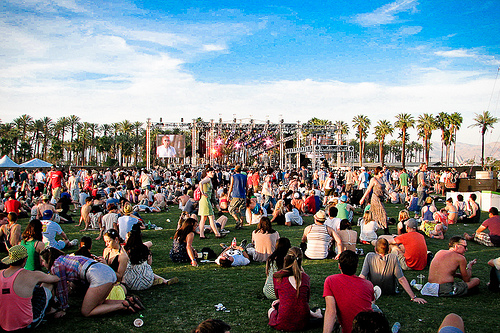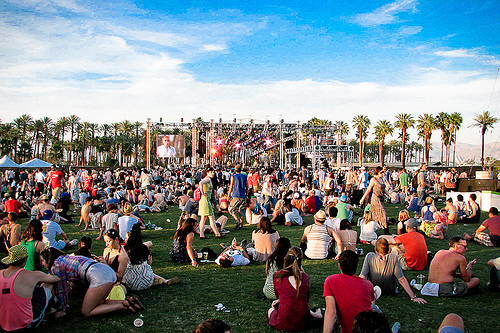 It was a sunny year at the 2011 Coachella Music Festival, and the stage is set for the town’s new concentrating photovoltaic farm.Photo: Paige K. ParsonsAn interesting solar development got buried by Thursday’s big news that French fossil fuel conglomerate Total had agreed to acquire a majority stake in SunPower, the Silicon Valley photovoltaic panel maker and power plant development.
It was a sunny year at the 2011 Coachella Music Festival, and the stage is set for the town’s new concentrating photovoltaic farm.Photo: Paige K. ParsonsAn interesting solar development got buried by Thursday’s big news that French fossil fuel conglomerate Total had agreed to acquire a majority stake in SunPower, the Silicon Valley photovoltaic panel maker and power plant development.
That $1.37 billion Total is spending on SunPower naturally overshadowed the Southern California desert community of Coachella’s announcement that it had flipped the switch on a 420-kilowatt concentrating photovoltaic farm at its water reclamation plant.
Don’t yawn. Here’s why the project is innovative, both in its use of technology and the business model.
Electricity payments typically account for 30 percent of a wastewater plant’s operation and maintenance costs (and such facilities consume three percent of the nation’s power — who knew?), according to the United States Environmental Protection Agency.
Coachella’s solution to rising electricity costs was found on a patch of degraded city-owned land thought to be of little value.
But now Coachella is leasing the land to Solar Power Partners, which developed the photovoltaic farm with Johnson Controls. It buys back the solar electricity, which offsets 40 percent of the electricity demand at the water reclamation plant.
“By installing the new solar energy system utilizing the latest technology available at our water reclamation facility, the city and SPP will power this critical city resource in a manner that will greatly reduce our operating expenses,” Coachella’s mayor, Eduardo Garcia, said in a statement.
The city was able to wring quite a bit of power out of a relatively small strip of land, thanks to the deployment of concentrating photovoltaic arrays made by SolFocus, a Silicon Valley startup.
The 55 arrays use lens to concentrate the sun onto tiny, ultra-efficient solar cells mounted in panels on large pedestals that track the sun throughout the day. That boosts electricity production while minimizing environmental impacts on the land. The catch: The technology must be deployed in areas with intense sunshine — i.e. the desert.
While that means you won’t see SolFocus arrays in Seattle or San Francisco, they’re good news for Coachella. Check ’em out if you head south for next year’s Coachella music festival.



